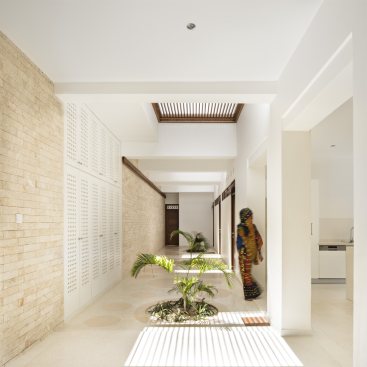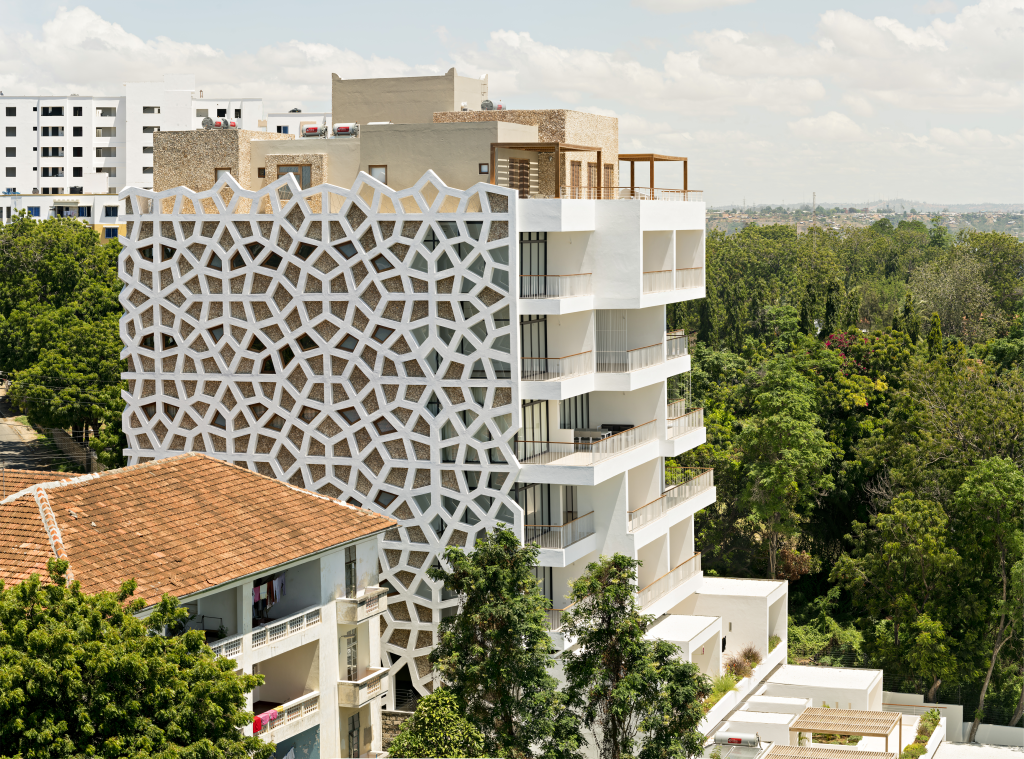The Swahili design influence of Kenya-based Urko Sanchez Architects’ Swahili Gem, a 14-unit project in Mombasa, Kenya, is clearest in its latticework moucharabieh structural shell, which surrounds the building on three sides. The shell’s design follows traditional patterns and provides both privacy and abundant natural light with minimal heat.
On the uncovered side, the units’ balconies and terraces face the sea. This arrangement allows for passive cooling via cross-ventilation through the wood lattices, which also filter light and heat. These exposures maximize the building’s integration with the surrounding scenery, providing natural views from within and without.

Javier Callejas
Three of Swahili Gem’s units are built directly into the sloped landscape, mimicking its shape and minimizing the building’s visual and environmental impact. Integrated vegetation, rainwater collection, solar water heating, and a bio-digester system serve to compensate for water scarcity and maintain an environmentally friendly presence in the space the project occupies.
The exterior uses both a white plaster finish and “mtomo”—a coral stone cladding technique original to Lamu, Kenya, that helps the structure keep its thermal capacity. Local artisans from Mombasa and Lamu designed the in situ terrazzo in the patio homes and the woodwork throughout the building.
